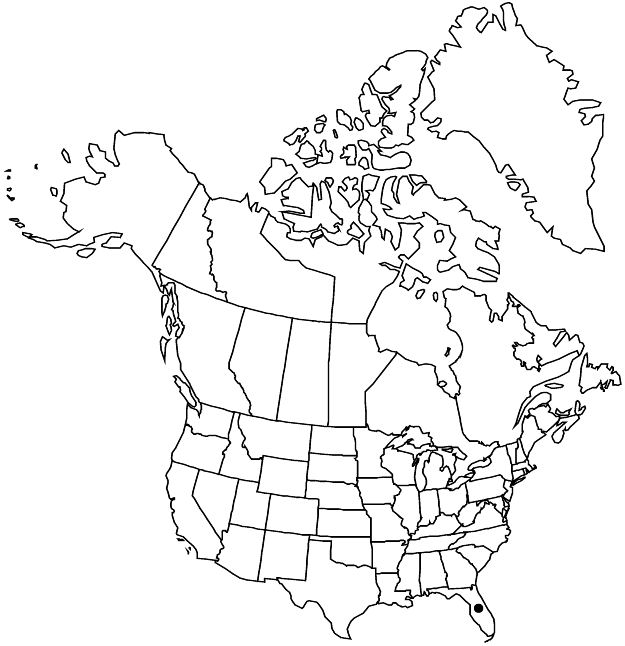Phyllanthus caroliniensis subsp. saxicola
Contr. Gray Herb. 176: 46. 1955.
Stems usually with 0–5 lateral branches, these usually unbranched, usually sparsely to densely scabridulous, sometimes glabrous. Leaf blades: both surfaces glabrous or scabridulous; vein reticulum obscure or invisible abaxially. Cymules with 1–2 staminate and 1–2 pistillate flowers. Pistillate flowers: sepals oblong to spatulate, 0.7–0.9 × (0.2–)0.3–0.5(–0.7) mm, apex rounded to subacute; nectary annular, unlobed or 6-lobed, enclosing ovary basally.
Phenology: Flowering and fruiting spring–early winter.
Habitat: Pinewoods, hammocks, flatwoods, prairies, disturbed areas, over limestone.
Elevation: 0–10 m.
Distribution

Fla., West Indies (Bahamas, Greater Antilles).
Discussion
Subspecies saxicola is a variable entity and some plants can be difficult to distinguish from subsp. caroliniensis. Most plants of subsp. saxicola look quite distinct with their limited branching and generally smaller leaves (although leaf sizes overlap). They usually also can be recognized by their scabridulous stems, but occasional populations are glabrous. The obscure leaf venation and wider pistillate sepals are diagnostic. In the flora area, subsp. saxicola is restricted to southern peninsular Florida from Charlotte County south and is allopatric with subsp. caroliniensis. J. K. Small (1933) called this taxon Phyllanthus pruinosus Poeppig ex A. Richard, a synonym of P. discolor Poeppig ex Sprengel, a species restricted to Cuba.
Selected References
None.